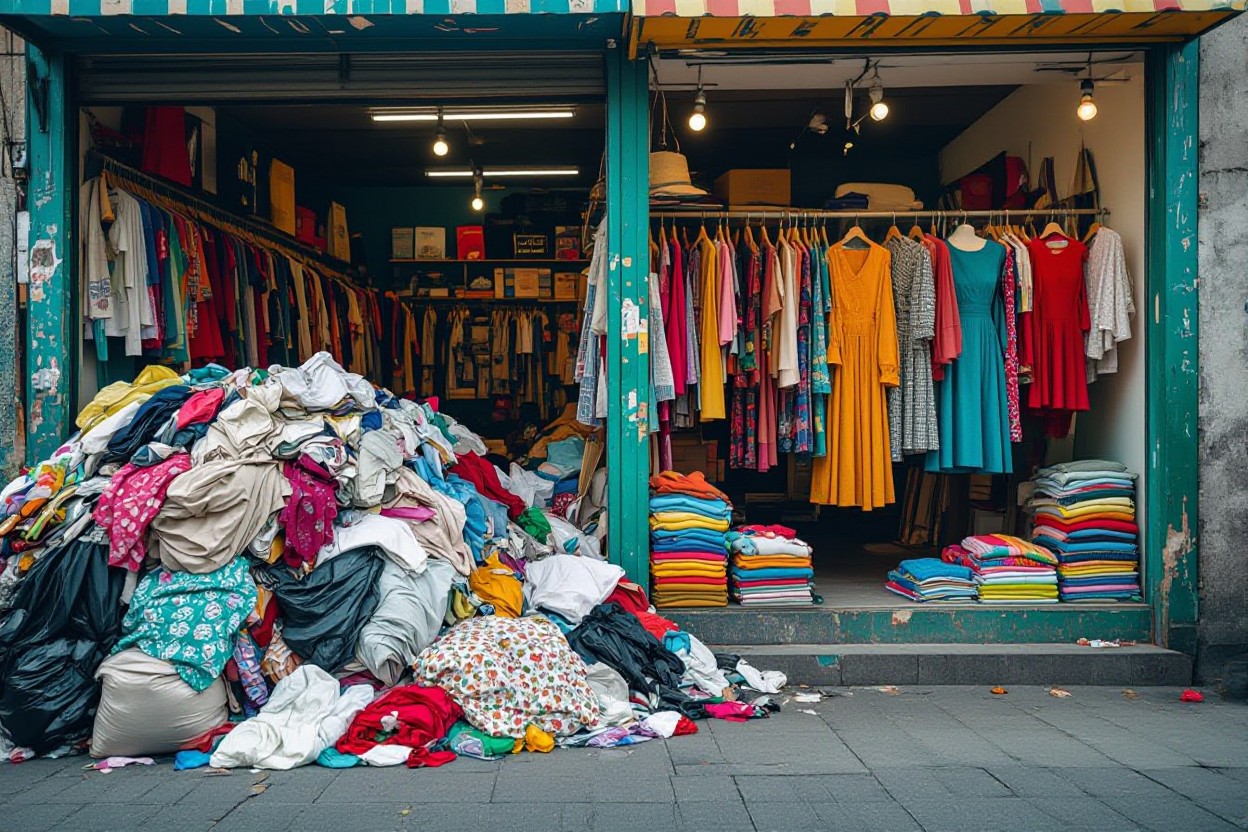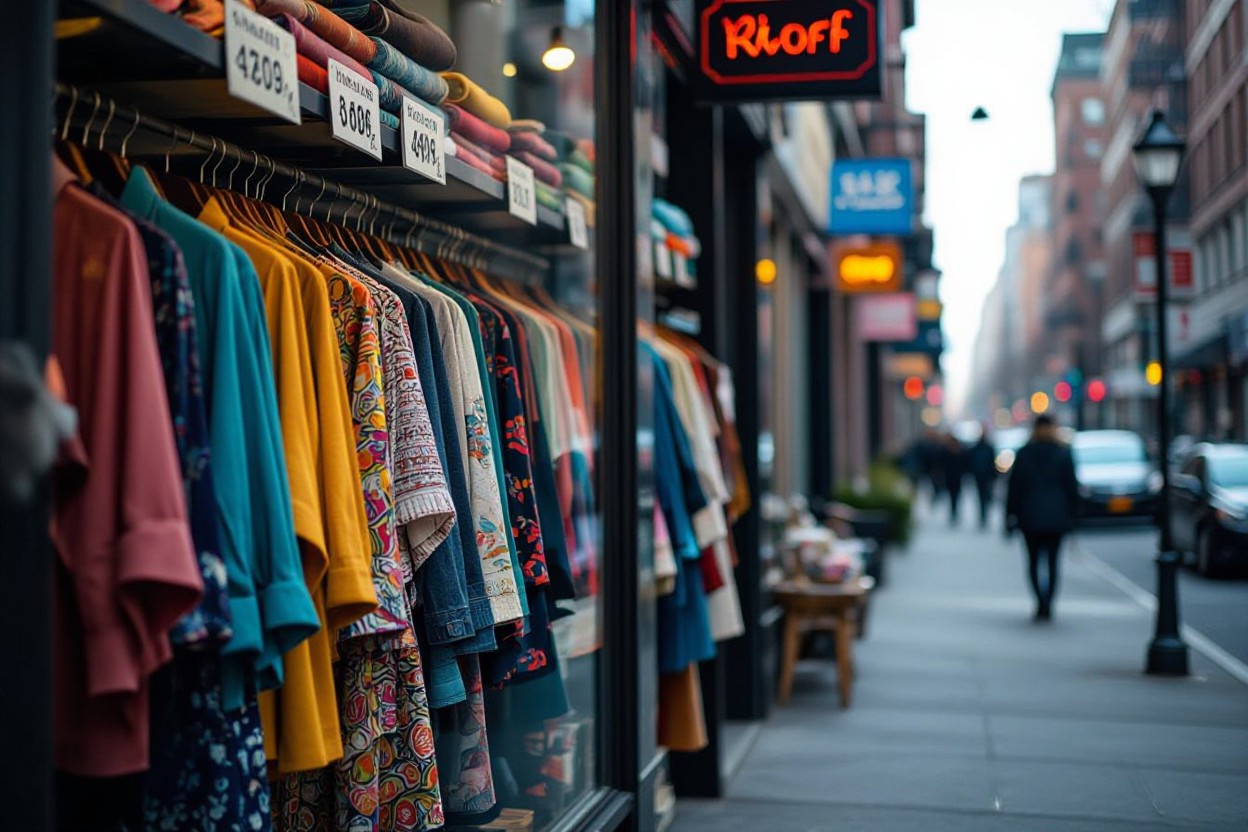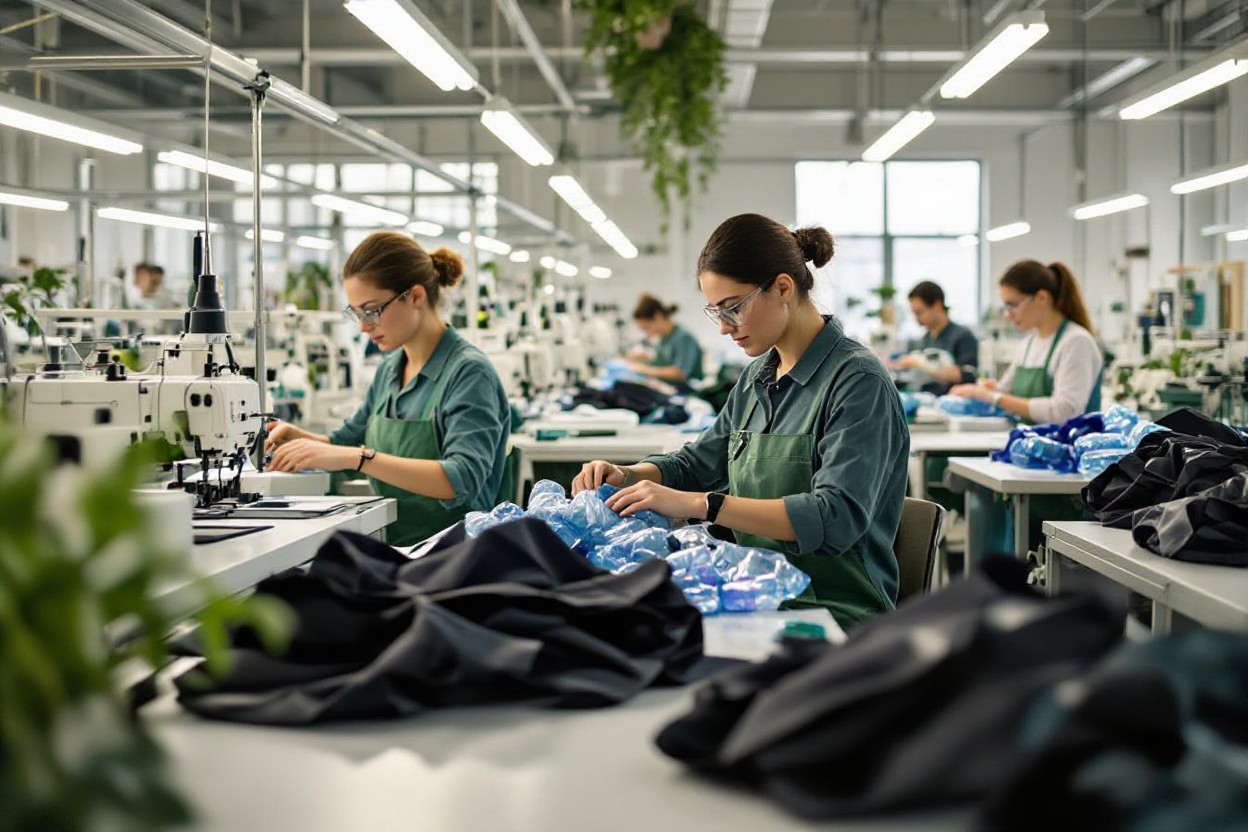Most fashion enthusiasts are unaware of the significant environmental impact their clothing choices can have. As you explore sustainable fashion, you’ll discover how your decisions affect resource consumption, waste production, and ethical labor practices. By embracing sustainable fashion, you actively contribute to reducing pollution and supporting fair treatment of workers. In 2025, this movement matters more than ever because the fashion industry remains one of the largest polluters globally. Understanding what sustainable fashion entails empowers you to make more responsible choices that benefit both the planet and the people behind your clothes.

The Environmental Impact: A Hidden Cost of Fast Fashion
Fast fashion’s rapid production cycles come with severe environmental consequences, many of which remain unseen by consumers. Large-scale manufacturing consumes vast amounts of resources and generates pollution, pushing ecosystems toward collapse. If you’ve ever wondered where the real cost of cheap clothing lies, it’s embedded in the destruction of natural habitats, excessive waste, and contamination you rarely hear about. These hidden tolls demand urgent attention as the fashion industry intensifies its global footprint, making sustainable alternatives not just preferable but necessary for our planet’s health.
Deforestation and Resource Depletion
Massive demand for materials like cotton, viscose, and leather fuels widespread deforestation, stripping away critical forest cover that supports biodiversity and regulates climate. You might be surprised to learn that producing one cotton shirt requires about 2,700 liters of water, equivalent to what you’d drink over nearly three years. This pressure drains freshwater reserves and depletes soils, threatening the livelihoods of farming communities and destabilizing ecosystems.
Water Pollution and Soil Erosion
Textile dyeing is notorious for releasing harmful chemicals and untreated effluents into rivers, leaving water bodies colored and toxic. You may not see how these pollutants devastate aquatic life and contaminate drinking water supplies. Soil erosion worsens when forests are cleared for agriculture or grazing to support fabric production, reducing land fertility and accelerating desertification.
The precise impact of water pollution extends beyond visual contamination. Studies reveal that untreated textile wastewater contains heavy metals like lead and mercury, plus carcinogenic dyes, which accumulate in marine food chains, endangering human health indirectly. Areas near manufacturing hubs such as Bangladesh and parts of India face dire water crises as toxic runoff infiltrates groundwater, forcing communities to rely on contaminated sources or costly water treatment. Soil erosion compounds these challenges by stripping nutrient-rich topsoil, undermining future agricultural productivity and further destabilizing vulnerable populations dependent on the land.

Social Consequences: Who Pays the Price?
The social toll of your clothing choices often remains invisible, yet it directly affects millions of lives. Factory workers in countries like Bangladesh and Cambodia frequently endure grueling hours for wages that barely cover basic needs. These human costs are intertwined with cultural exploitation, where traditional designs are often copied without respect or compensation. Your sustainable fashion choices can disrupt this cycle, elevating fair wages and cultural dignity simultaneously.
Labor Exploitation and Inequity
Many garment workers receive less than $100 per month to produce your everyday wardrobe, facing unsafe working conditions and minimal legal protections. Child labor and forced overtime still plague parts of the industry, with women making up nearly 80% of this underpaid workforce. Opting for brands that enforce ethical labor standards directly challenges this systemic exploitation and fosters equitable employment.
Cultural Appropriation and Identity Issues
When fashion brands adopt traditional patterns or symbols without consulting or compensating originating communities, they often strip these cultural elements of their meaning. This practice perpetuates stereotypes and undermines indigenous identities. Your support for designers who collaborate respectfully ensures authenticity and shares economic benefits with those communities.
Delving deeper, cultural appropriation in fashion frequently involves sacred motifs being commercialized for trends, ignoring their historical and spiritual significance. Brands profiting from these designs without acknowledgment contribute to erasure and misrepresentation. Examples include the unauthorized use of Navajo patterns or African textiles by global fashion houses, which has led to backlash and legal challenges. You have the power to promote change by favoring creators who honor cultural heritage genuinely, turning fashion into a platform for cultural respect rather than exploitation.

Innovations Fueling Change: Technology’s Role in Sustainable Fashion
Technology reshapes the sustainable fashion landscape by offering solutions that reduce waste, enhance transparency, and streamline eco-friendly production. From AI-driven design tools cutting fabric waste to blockchain ensuring supply chain accountability, these innovations empower you to make more responsible fashion choices. Startups and established brands alike leverage technology to challenge traditional models, proving that sustainability and style can coexist without compromise.
Eco-Friendly Materials and Production Techniques
You’ll find materials like recycled polyester, organic cotton, and biodegradable fibers replacing conventional textiles, significantly lowering environmental impact. Advances in production include waterless dyeing methods and 3D knitting, which minimize water use and scrap fabric. Brands such as Adidas use ocean plastic waste for sneakers, illustrating how innovative materials and processes can pivot an entire supply chain toward sustainability.
The Rise of Circular Fashion and Zero Waste Initiatives
The circular fashion movement encourages you to rethink garment life cycles through reuse, recycling, and repair, aiming to keep textiles in use for as long as possible. Brands are introducing clothing-as-a-service models, resale platforms, and take-back programs that close the loop. These zero-waste initiatives challenge the traditional linear ‘take-make-dispose’ approach, reducing landfill contributions and resource depletion.
Diving deeper, circular fashion involves designing products for durability and recyclability at the outset, encouraging upcycling and remanufacturing. Companies like Patagonia offer repair services and resell used items, significantly extending product lifespan. Meanwhile, innovative startups utilize chemical recycling to transform old garments into new fibers, demonstrating technology’s potential to drive a closed-loop system that dramatically cuts waste and pollution. As you integrate these options, your fashion choices power a systemic shift toward sustainability.
The Consumer’s Dilemma: Navigating Ethical Choices in 2025
Facing the flood of fast fashion and eco-conscious labels, you must sift through marketing claims and certifications to pinpoint brands that truly align with sustainable values. This year, greenwashing is more sophisticated, making it tougher to discern whether a brand’s commitment is authentic or simply a sales tactic. Balancing affordability with ethical sourcing and animal welfare frequently tests your priorities, especially as supply chain transparency improves but remains uneven across markets. Your choices ripple outward, shaping the industry’s future standards and influencing the carbon, water, and labor footprint embedded in your wardrobe.
Identifying Truly Sustainable Brands
Brands earning genuine sustainability credentials often showcase clear supply chain transparency and third-party certifications like B Corp, Fair Trade, or GOTS for organic textiles. You can look for disclosed factory audits, commitments to circular fashion through take-back programs, and use of renewable or recycled materials. Brands like Patagonia and Eileen Fisher set benchmarks by reporting environmental impacts annually and investing in regenerative agriculture. Spotting these signals enables you to sidestep opportunistic brands that exploit sustainability trends without substantive action or independent verification.
The Carbon Footprint of Your Wardrobe
Each garment you buy carries a carbon cost from material extraction, production, transportation, and eventual disposal. Synthetic fibers average 5-10 times the emissions of natural fibers, while washing and drying practices add up to 30% of a clothing item’s lifetime footprint. You benefit from prioritizing brands that use low-impact fibers, local manufacturing, and durable construction to minimize replacements. Additionally, shifting to secondhand or rental options can drastically reduce the embodied carbon associated with your style choices.
Diving deeper, the average t-shirt emits about 2.1 kg of CO2 over its lifecycle, from cotton cultivation to landfill disposal. Switching to organic cotton or hemp can cut emissions by nearly 30%, while brands sourcing fibers regionally reduce transportation emissions by 40%. How you maintain clothing, like washing in cold water and air drying, further impacts your carbon footprint. Given that the global fashion industry accounts for roughly 4% of total greenhouse gases—more than aviation and shipping combined—your wardrobe decisions play a measurable role in addressing climate change challenges.
Policy and Advocacy: Shaping a Sustainable Future
As you consider the broader forces guiding sustainable fashion, policy and advocacy stand out as powerful tools shaping industry practices. Behind every shift towards greater environmental responsibility, well-orchestrated legislation and vocal advocacy groups push brands to rethink their supply chains and transparency. These efforts help create the framework where sustainability is not just a trend but an enforced norm, influencing how you and others across the globe shop and influence change.
Government Regulations and Industry Standards
You’ll notice that new government mandates in the EU and parts of North America now require clothing companies to disclose detailed information about their carbon footprint and labor conditions. These regulations enforce higher environmental standards and social accountability, leveling the playing field and preventing greenwashing. For example, legislation like the EU’s Sustainable Textile Strategy compels brands to adhere to strict lifecycle assessments, directly impacting what ends up on your store shelves.
Grassroots Movements and Community Engagement
Local and global grassroots movements have energized sustainable fashion by mobilizing consumers like you to demand transparency and ethical practices. Community-driven campaigns, such as Fashion Revolution’s #WhoMadeMyClothes initiative, have influenced millions to question supply chain ethics, boosting pressure on brands to reveal their manufacturing realities and commit to change.
Diving deeper into grassroots activism shows how collective voices amplify impact beyond individual consumer choices. You can join clothing swaps, support local ethical designers, or engage in social media campaigns that spotlight unsustainable practices. These movements empower people worldwide to hold companies accountable in real time and foster a culture of conscious consumption, proving that active participation builds momentum for lasting reform.
Final Words
Presently, sustainable fashion is more than a trend; it’s a shift towards mindful choices that reduce environmental impact and promote ethical practices. By embracing sustainable fashion, you contribute to a healthier planet and support fair labor conditions. Understanding its importance in 2025 empowers you to make informed decisions that reflect your values and influence the fashion industry positively. Your commitment to sustainable fashion helps create a future where style and responsibility coexist seamlessly.





Leave a comment